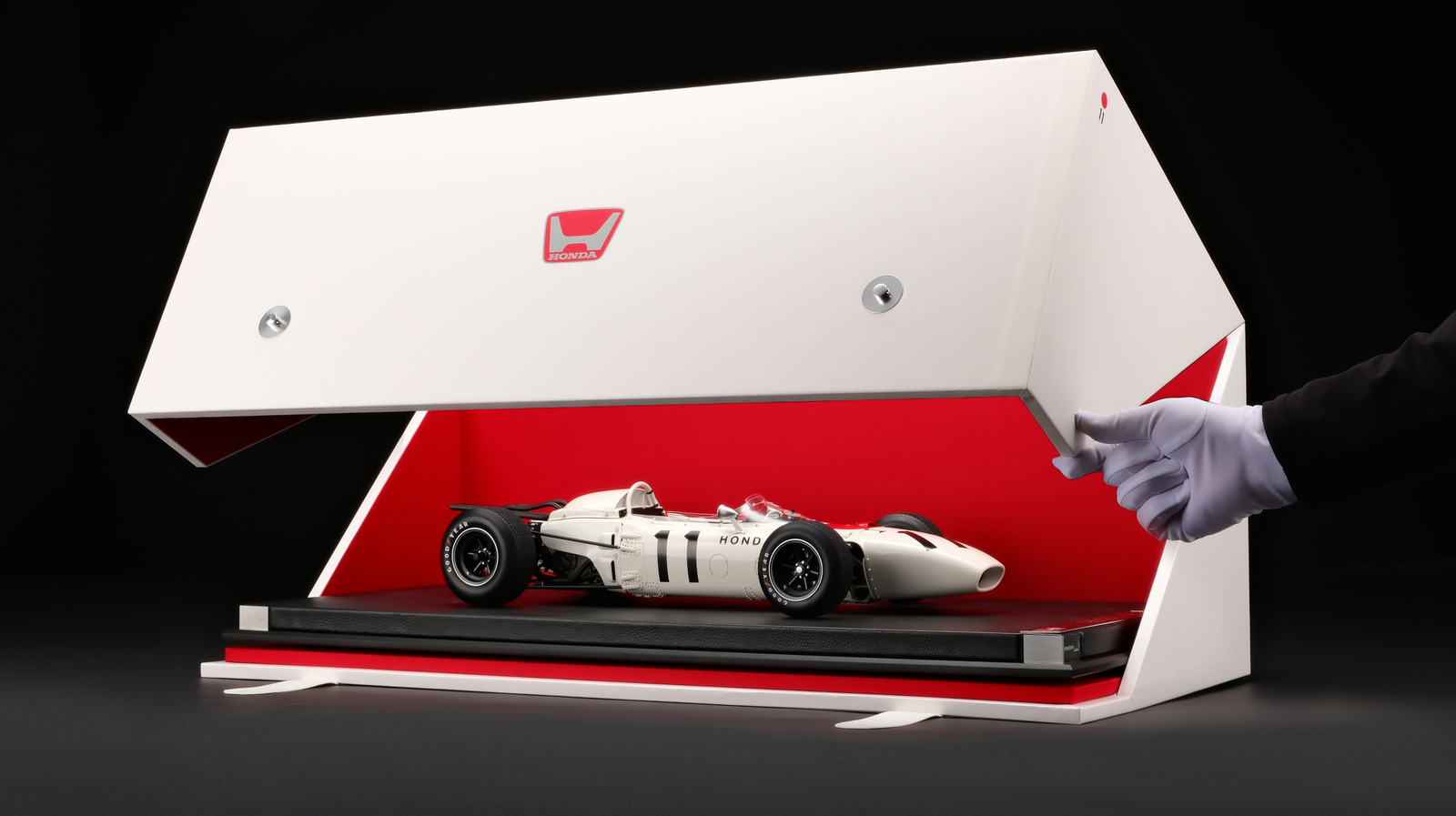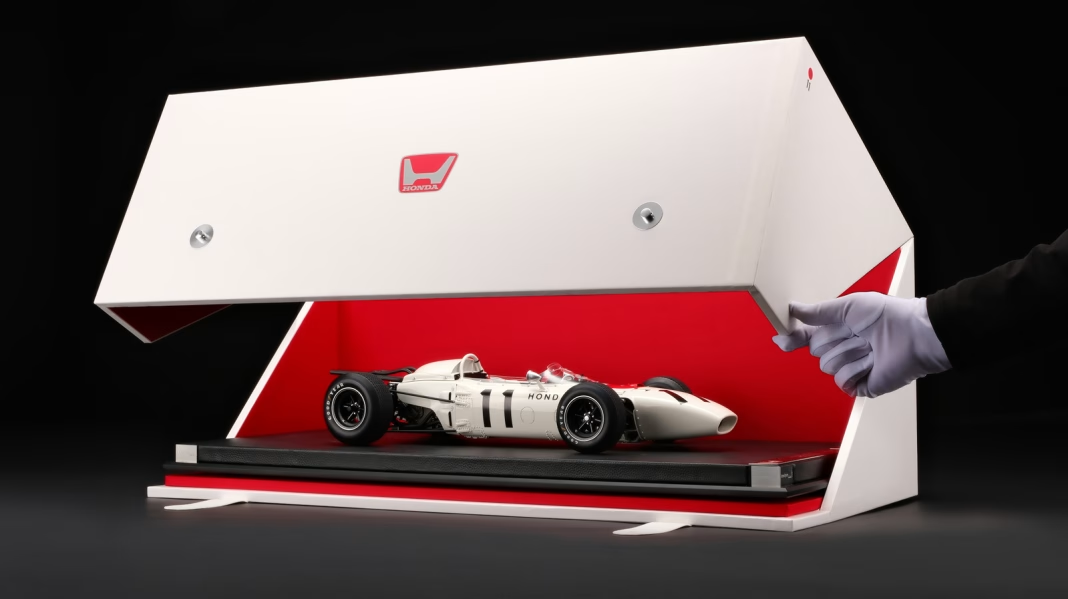What Makes the 1:8 Scale Honda RA272 Model So Special?
If you’ve ever dreamed of owning a piece of motorsport history but don’t quite have the garage space (or the budget) for a real Formula 1 car, the 1:8 scale Honda RA272 model might just be the next best thing. But what sets this model apart from the usual die-cast collectibles you see on shelves? For starters, it’s not just a display piece—it’s a masterclass in craftsmanship and attention to detail.
Why Does This Model Cost More Than a New Civic?
At $28,995, the price tag on this model might make your jaw drop. That’s more than what you’d pay for a brand-new Honda Civic. So, what exactly are you getting for that investment? It comes down to the sheer amount of work and artistry involved. Each model is made from an astonishing 1,600 individual parts, and the assembly process takes around 450 hours—yes, you read that right. That’s nearly three months of full-time work for a single model.
The materials used aren’t your run-of-the-mill plastics, either. Builders use high-grade metals, hand-stitched leather, and authentic finishes that mirror the original 1965 Honda RA272 Formula 1 car. Every tiny bolt, every curve of the bodywork, even the texture of the tires—nothing is overlooked. This isn’t just a model; it’s a miniature engineering marvel.
How Rare Is the 1:8 Scale Honda RA272 Model?
Exclusivity is a big part of the appeal. Only 30 of these models will ever be made. That’s fewer than most limited-edition supercars. For collectors, rarity drives value, but it also means you’re joining a very small club of owners worldwide. In the world of high-end collectibles, scarcity often trumps size, and this model is a textbook example.
What’s the Story Behind the Real Honda RA272?
To understand why this model is so coveted, it helps to know a bit about the car it’s based on. The Honda RA272 made history in 1965 as the first Japanese car to win a Formula 1 Grand Prix, with Richie Ginther behind the wheel at the Mexican Grand Prix. The car’s innovative V12 engine and lightweight chassis were ahead of their time, and its victory marked a turning point for Honda in international motorsport.
For many enthusiasts, owning a scale model of the RA272 isn’t just about the car itself—it’s about celebrating a moment when underdogs rewrote the record books. That emotional connection is something you can’t put a price on, even if the model itself comes with a hefty one.
Who Buys These Ultra-High-End Scale Models?
You might wonder who actually buys a $29,000 model car. The answer? Serious collectors, motorsport aficionados, and sometimes even museums. According to a 2023 report from the Luxury Institute, the market for high-end collectibles has grown by nearly 18% over the past two years, with rare automotive models leading the charge. These buyers aren’t just looking for toys—they want investment pieces, conversation starters, and tangible connections to automotive history.
What Goes Into Building One of These Models?
Let’s break down the process. Each model starts with a painstakingly researched blueprint, often using original factory drawings and archival photographs. Craftsmen then machine, cast, and finish each of the 1,600 parts by hand. The assembly process is meticulous: engines are built piece by piece, body panels are painted and polished to perfection, and interiors are stitched with real leather. The result? Pure magic. It’s the kind of artistry you’d expect from a Swiss watchmaker or a master jeweler.
Is It Worth the Investment?
That depends on what you value. If you’re after a quick flip or a flashy centerpiece, there are cheaper ways to fill a display case. But if you appreciate the intersection of history, engineering, and art, this model offers something unique. Some collectors have seen the value of limited-edition scale models appreciate over time, especially as the market for rare collectibles heats up. Still, most buyers aren’t in it for the money—they’re in it for the love of the craft.
How Does This Model Compare to Other Collectibles?
Compared to mass-produced die-cast cars, this Honda RA272 is in a league of its own. Think of it like the difference between a print and an original painting. The attention to detail, the rarity, and the sheer amount of human effort involved put it on par with fine art or high-end horology. In fact, some collectors display these models alongside luxury watches and rare sculptures.
What Should You Consider Before Buying?
If you’re tempted to join the exclusive club of owners, there are a few things to keep in mind. First, these models require careful handling and, ideally, a dust-free display case. They’re not meant for play—they’re for admiration. Second, provenance matters. Make sure you’re buying from a reputable source, as authenticity is key to long-term value. And finally, be prepared for a waiting period; with only 30 units being made, demand is likely to outstrip supply.
The Big Takeaway
The 1:8 scale Honda RA272 isn’t about perfection—it’s about smarter adjustments. It’s a celebration of history, craftsmanship, and the joy of owning something truly rare. Start with one change this week—maybe it’s appreciating the artistry in your own collection or learning more about the stories behind your favorite pieces—and you’ll likely spot the difference by month’s end.


